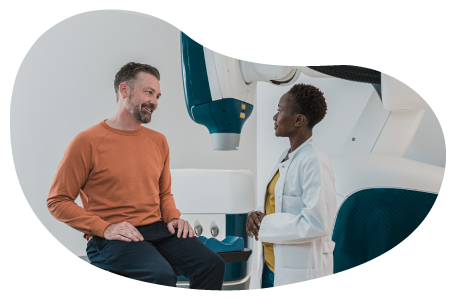
Needlestick injury coverage
A needlestick injury can result in the transmission of a serious bloodborne pathogen. Employers must ensure they have essential coverage for employees’ treatment costs and lost wages if an injury occurs. Coverage may also protect employers from potential lawsuits.
What is a needlestick injury?
A needlestick injury is when the skin is accidentally punctured by a needle or other sharp object, like a scalpel or lancet. These instruments are commonly referred to as “sharps.” Sharps injuries can occur any place medical care is provided, including:
- Hospitals
- Clinics
- Laboratories
- Nursing homes
- Ambulances
- Veterinary practices
Needlestick injuries occur more often than many realize. According to the U.S. Centers for Disease Control and Prevention (CDC), approximately 385,000 needlestick injuries occur in hospitals each year. The total is even higher since that figure doesn’t include needlestick injuries that occur in other healthcare settings.

How much does workers' compensation insurance cost?

Workers’ compensation insurance policies cost an average of $45 per month.
Your workers' comp cost is calculated based on a few factors, including:
- Payroll
- Location
- Number of employees
- Industry and risk factors
- Coverage limits
- Claims history
What are the risks of a needlestick injury?
Needlestick injuries are a significant occupational hazard for healthcare workers. Although the puncture from a needlestick injury might seem minor, it can be serious due to the potential exposure to body fluids or bloodborne pathogens, like hepatitis B (HBV), hepatitis C (HCV), and HIV.
Exposure to these pathogens can lead to serious chronic health issues. Needlestick injuries can also cause significant stress while injured individuals wait for infectious diseases blood test results. Other risks include infections at the wound site, allergic reactions, or exposure to medications that may have been in the contaminated needle.
Healthcare employers have a responsibility to address the risks of needlestick injuries by providing a safe working environment. They're required by the Occupational Safety and Health Administration (OSHA) to offer proper training on the use of sharps, enforce proper disposal using disposal containers, and provide safe needle devices, such as retractable needles. Employers must also ensure injured employees receive immediate medical attention.
Employers that fail to protect their employees from needlestick injuries face significant risks. They may have to deal with the costs of medical care and lost productivity. It could also lead to reputational damage, which could result in a loss of business. Employees may also lose trust in the employer, which could decrease morale and increase turnover.
How much does a needle stick injury cost?
The cost of dealing with a needlestick injury can be high. The average cost is $4,352 for medical expenses. However, it can be significantly more for cases involving bloodborne pathogen infections, which may require long-term care, additional testing of the injured employee and source patient, and specialized treatments.
In conjunction with the medical bills, employers may face additional costs. They may have to deal with regulatory fines if they're found to not be in compliance with OSHA regulations. They may also face potential lawsuits, which could result in a significant judgments and attorney fees.

Business owners who don’t purchase workers’ comp insurance when it’s required could face penalties ranging from fines to jail time.
What is the employer responsible for if an employee gets stuck with a needle?
Employers must take quick action when a needlestick injury occurs. They must ensure the injured individual receives timely medical treatment, and they must also provide support for follow-up care.
Additionally, employers have a responsibility to keep records of all needlestick injuries. Under OSHA’s recordkeeping rule (29 CFR 1904), employers with more than 10 employees (with some exceptions) must record any laceration or needlestick injury in OSHA Form 300, "Log of Work-Related Injuries and Illnesses," as a work-related injury within seven calendar days of being informed of the injury. The entry must specify it was a sharps-related incident involving potential exposure to bloodborne pathogens.
Employers must also report the injury using OSHA Form 301, "Injury and Illness Incident Report." At the end of the year, they must post OSHA Form 300A, "Summary of Work-Related Injuries and Illnesses," in a conspicuous location in the workplace.
Can you file a claim for needlestick injuries?
If an employee experiences a needlestick injury, a claim can be filed — if they have the right insurance coverage. However, health insurance policies typically do not cover work-related injuries. Needlesticks and other on-the-job injuries are usually covered by workers' compensation or specialized policies.
Employers can purchase additional coverage for work-related injuries. These policies may provide benefits beyond what workers’ compensation offers. The additional coverage helps to protect both the employer and its employees from financial and other risks.
What is needlestick insurance?
Needlestick insurance coverage is offered by a private insurance company and protects healthcare professionals who experience a needlestick injury on the job. It covers treatment for the injury, testing for bloodborne pathogens, and follow-up care. It may also provide a one-time payment if an individual contracts a bloodborne illness from an injury.
A needlestick insurance policy may also include benefits for lost wages, counseling, and legal assistance. The needle stick injury claim amount can vary depending on the terms of the policy and the severity of the injury.
Does workers' comp cover a needlestick injury?
Workers' compensation insurance for healthcare workers typically provides coverage for needlestick injuries that occur on the job. Workers’ compensation claims cover treatment, testing, and follow-up care. It also covers a portion of lost wages when employees have to miss work due to an injury. This makes needle stick injury workers’ compensation an important coverage for small businesses to ensure their employees are protected and to avoid potential lawsuits.
Workers’ compensation is often mandated by state law for businesses with employees. If a business doesn’t have coverage, it could face significant penalties for noncompliance, as well as significant liability if a workplace injury occurs and the affected employee sues.
Verified workers' compensation insurance reviews
Who should get workers' compensation for needlestick injuries?
Anyone who works in a healthcare setting where needles or other medical sharps are used should get workers’ comp needlestick coverage. This includes healthcare providers in hospitals, dental offices, home health agencies, and other healthcare facilities or settings.
Workers’ compensation coverage is especially important for those who handle needles, including:
Coverage is also necessary for those who work in a medical setting but aren’t healthcare professionals. For example, a hospital custodian could accidentally sustain a needlestick injury from used needles while disposing of medical waste, bodily fluids, or cleaning up after a procedure. Coverage is essential for both clinical and non-clinical personnel to ensure everyone is protected from the occupational health risks associated with sharps.
How to get a workers' compensation insurance policy
It's easy to get a workers' compensation insurance policy with Insureon. Just fill out our easy online application to receive quotes from trusted providers. Our expert insurance agents can answer any questions and help you find the right coverage for your needs.
Most businesses can get insured within 24 hours and easily download a certificate of insurance as proof of coverage right away.
